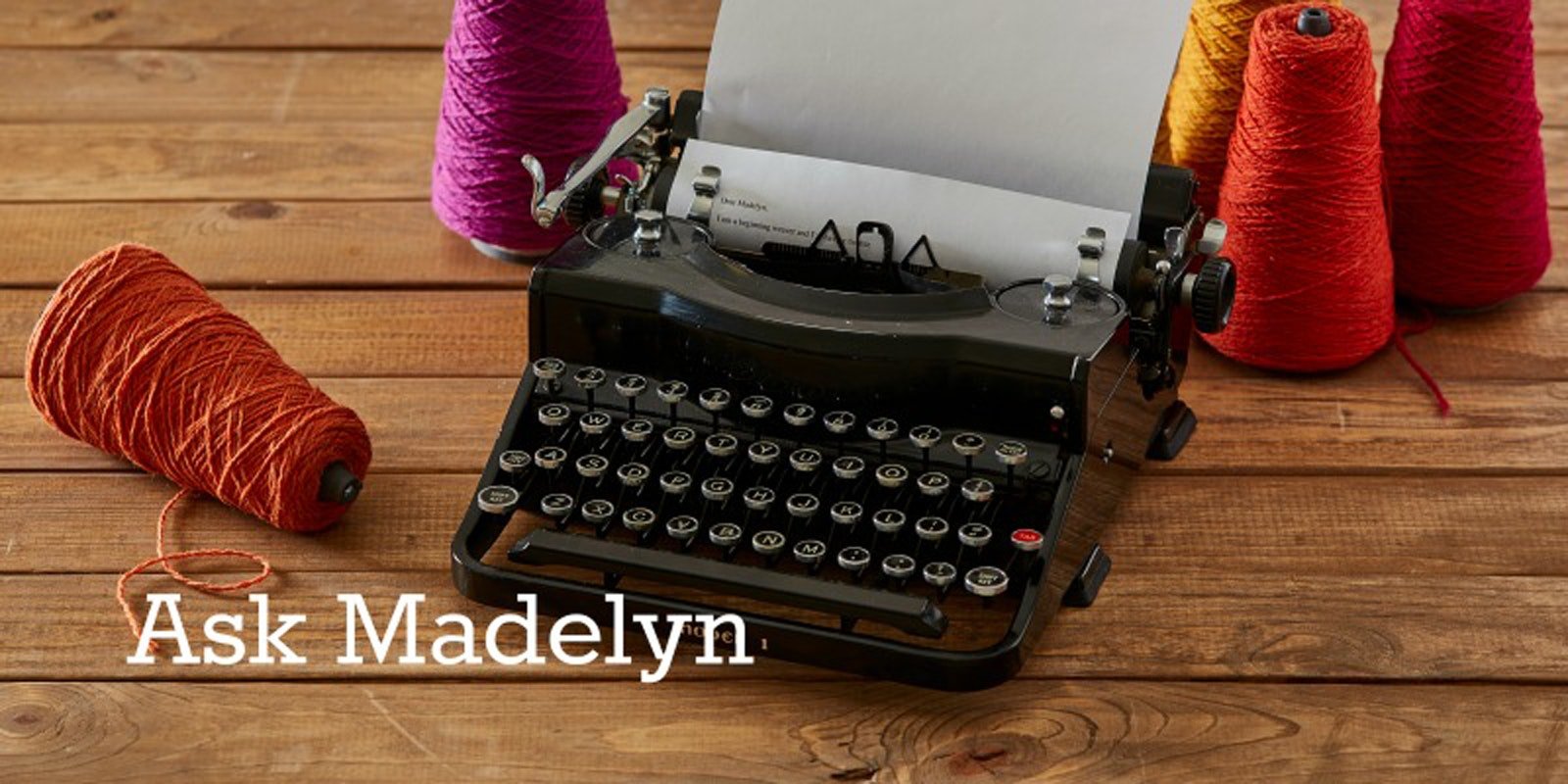Hi Madelyn! A group I belong to has been having a discussion about floating selvedges. For one weaver, the right floating selvedge was continually breaking. That caused much advice from others, and it seemed as though there were lots of different ways to treat floating selvedges. Many project instructions don’t really tell you specifically how to warp them or weight them. I wondered if you had any thoughts on this? —Amy
Hi Amy!
Floating selvedges are warp threads, one on each edge of the warp, that are not threaded through a heddle but go straight from front beam to back beam. They therefore remain in the middle of the shed when the shuttle is thrown. The shuttle goes around the floating selvedge on each side as it comes out of and then re-enters the shed.

The floating selvedge is beamed with the rest of the warp.
There are two typical methods for handling floating selvedges. One is to wind and beam the floating selvedge with the rest of the warp. The other is to add it after the warp is beamed, tying it onto the front apron rod and suspending it from the back beam. With either method, the floating selvedge must be weighted. It doesn’t really weave with the weft and passes straight through the cloth, rather than taking a path of over/under the weft.
I prefer beaming the floating selvedge with the rest of the warp. When the warp is beamed, I hang an S-hook from the floating selvedge. It slides down to rest beneath the warp beam and I never think about it again. If the floating selvedge is not beamed, you have to add weight to it (film canister, prescription bottle or such) and you have to move the weight as the warp advances.

The floating selvedge is added after the warp is beamed.
An argument in favor of adding the floating selvedge as a separate thread is that if the floating selvedge breaks, it is easier just to pull up some length of it, pin it to the cloth, and continue weaving. But a floating selvedge shouldn’t really break, any more than any edge thread should break. If it does, it is due to draw-in, which generally means that not enough weft slack has been allowed for each pick. If the added floating selvedge thread is hanging freely, it can also unply, which can make it weaker.
Some suggest doubling the floating selvedge to make it stronger. Its purpose isn’t to add strength, however. It is there only to make sure the weft always passes around the last thread on each side of the warp. (It should really only be used when it has to be there for that purpose; plain weaves do not require a floating selvedge.) It’s better to work on decreasing draw-in (by using a temple when necessary but more importantly allowing enough weft angle or curve so that the weft can bend over and under the warp threads). A doubled thread on the edge will show as a thicker thread there.
—Madelyn
If you have a weaving question please email Madelyn! View related & recent "Ask Madelyn" posts! Updated 8/10/17.

